How to Clear Cache on Your iPhone Running iOS 17
Think of your iPhone like a workspace: the cleaner it is, the better it performs. This guide explains how to clear cache on your iPhone, helping your device run faster and more efficiently. From routine maintenance to solving sluggish responses, these easy steps will help you manage your iPhone’s cache and maintain its optimal performance. 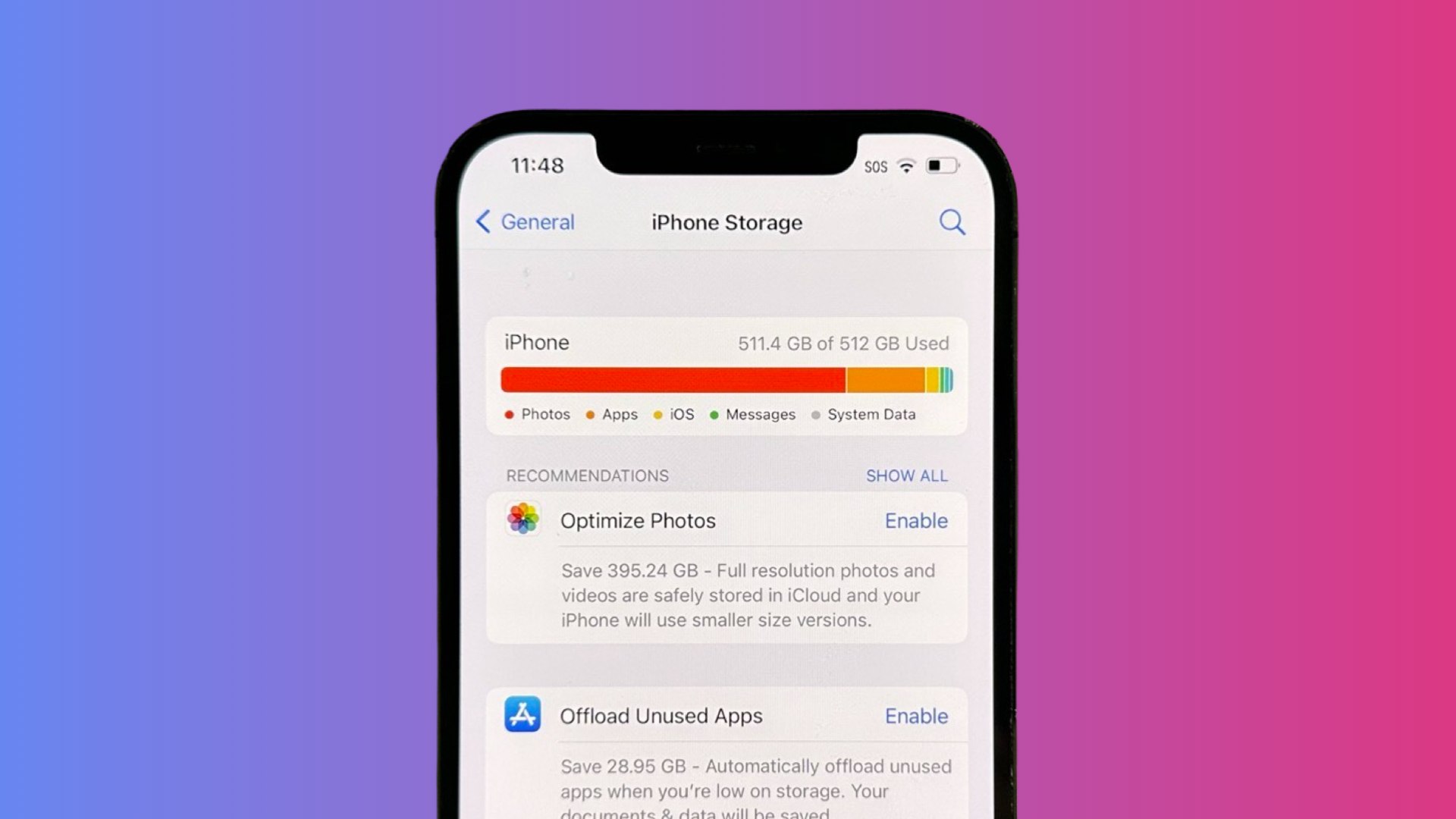
Why Do You Need a Cache on iPhone
On your iPhone, the cache on your iPhone acts as a temporary storage space that speeds up how quickly apps and websites load. When you open an app for the first time, your iPhone saves certain data like your settings and visuals to make the app ready to use faster the next time you open it. This stored data means that the app doesn’t have to reload everything from scratch, allowing it to launch more quickly and improve your overall experience. The same principle applies when you browse websites on your iPhone; data from sites you’ve visited is stored so that pages load faster on subsequent visits. Cache offers several benefits, which include:
- Reduced data usage as recurring data is retrieved from the cache instead of being downloaded repeatedly.
- Increased speed and responsiveness of apps and web browsing.
- Improved overall device performance, leading to a better user experience.
However, over time, cache accumulation can also lead to issues. If the cache is not cleared periodically, it can take up significant storage space on the iPhone. Furthermore, since cached data can become outdated, using it may lead to app malfunctions or the loading of old versions of webpages.
Why Does an iPhone Need Cache Clearing?
While cache data enhances user experience by speeding up app loading times and reducing data usage, it can also lead to certain issues if not managed properly. Over time, as more and more data gets stored, it might become necessary to clear your iPhone’s cache. Doing so can help in the following ways:
- Freeing up storage space: Cache data, especially from frequently used apps and websites, can accumulate over time and occupy a significant portion of your iPhone’s storage. Clearing the cache can thus help free up storage space, which can be used for other apps, photos, or videos.
- Improving app performance: Outdated cache data can occasionally cause apps to malfunction or slow down. By clearing the cache, you’re essentially giving the app a ‘fresh start’, which can sometimes improve its performance.
- Troubleshooting app functionality: Sometimes, clearing the cache can help resolve issues within apps that are not functioning correctly. This is because the cache might contain corrupt or outdated data that’s causing the app to behave erratically.
- Maintaining privacy: Clearing cache regularly helps protect your privacy by removing stored data that might include sensitive information.
However, it’s worth noting that when you clear your cache, some websites may load more slowly the next time you visit them, as your iPhone will need to download all the data again. In addition, you may also find that some apps don’t remember your preferences or settings.
How to Clear Cache on iPhone
In this section, we delve into a detailed, method-by-method guide to effectively clear cache on your iPhone. From the default browser Safari to various popular apps, these methods are tailored to ensure your iPhone runs smoothly and efficiently. Let’s explore each method.
Method 1: Reboot Your iPhone
Before diving into cache clearing methods, a simple yet effective starting point is to reboot your iPhone. Restarting your device can clear temporary cache and resolve minor software glitches. Here’s how to reboot your iPhone in a few easy steps.
For iPhones with Face ID (iPhone X and later)
- Press and Hold Side Button and Volume Button: Simultaneously press and hold either the volume up or volume down button and the side button until two slider options appear.
- Slide to Power Off: Drag the slider that says ‘Slide to Power Off’ to the right. Your iPhone will begin to shut down.
- Wait for Shutdown: Once the screen turns black, your iPhone is off. Wait for about 30 seconds to ensure it’s completely shut down.
- Restart the iPhone: Press and hold the side button again until the Apple logo appears. Release the button and wait for your iPhone to finish booting up.
For iPhones with a Home Button (iPhone 8 and earlier)
- Press and Hold the Top (or Side) Button: Hold down the top (or side) button until the ‘Slide to Power Off’ slider appears on the screen.
- Slide to Power Off: Swipe the slider, and your iPhone will turn off.
- Wait for Shutdown: Give it a few seconds to ensure the phone is completely powered down.
- Restart the iPhone: Press and hold the top (or side) button again until the Apple logo appears. Release the button and allow your iPhone to reboot.
Method 2: Clear Cache from Safari
Safari, the default web browser on all iPhones, routinely stores cache data to improve browsing speed by keeping a record of your visits and activity. While this helps web pages load faster, it can also accumulate and slow down your device over time. Regularly clearing Safari’s cache can refresh your browsing experience, help web pages load correctly, and optimize your iPhone’s overall performance. Below are detailed steps on how to effectively clear the cache in Safari:
- Open the ‘Settings’ app on your iPhone.
- Scroll down and tap ‘Safari’.
- Tap ‘Clear History and Website Data’.
- In the confirmation window, tap ‘Clear History and Data’.
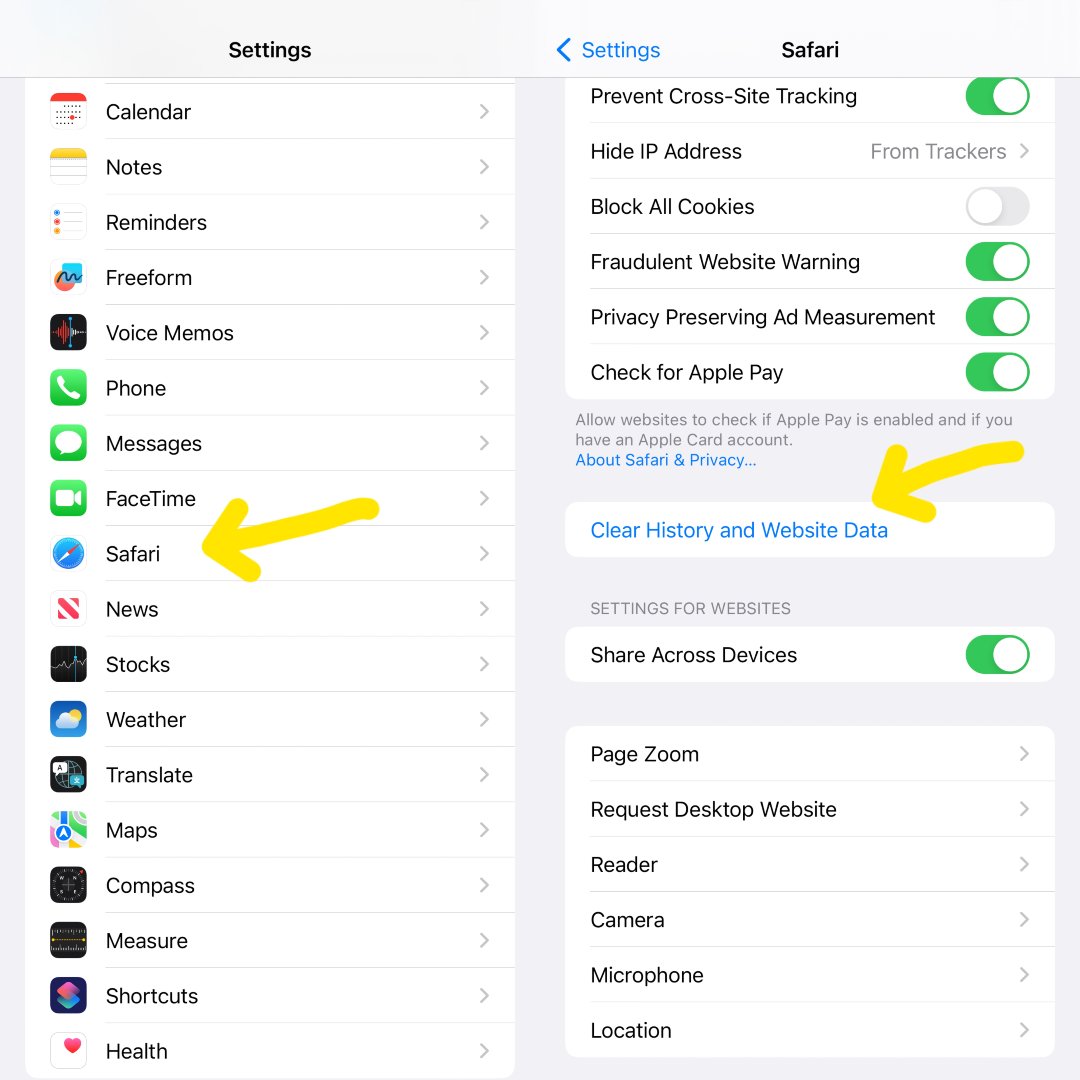
Method 3: Delete Cache from Individual Apps
Different apps store cache in unique ways. This segment focuses on how to individually clear cache from commonly used apps like Twitter, TikTok, and Chrome. Follow these app-specific instructions to free up space on your iPhone.
Clear Twitter Cache
- Open the Twitter app, tap on your account icon in the upper left hand corner of the screen.
- Tap ‘Settings and Privacy’, scroll down and tap ‘Accessibility, display, and languages’.
- Tap ‘Data usage’.
- Here you’ll see ‘Media Storage’ and ‘Web Storage’. Tap on each of these and select the ‘Clear media storage’ or ‘Clear all web storage’ option.
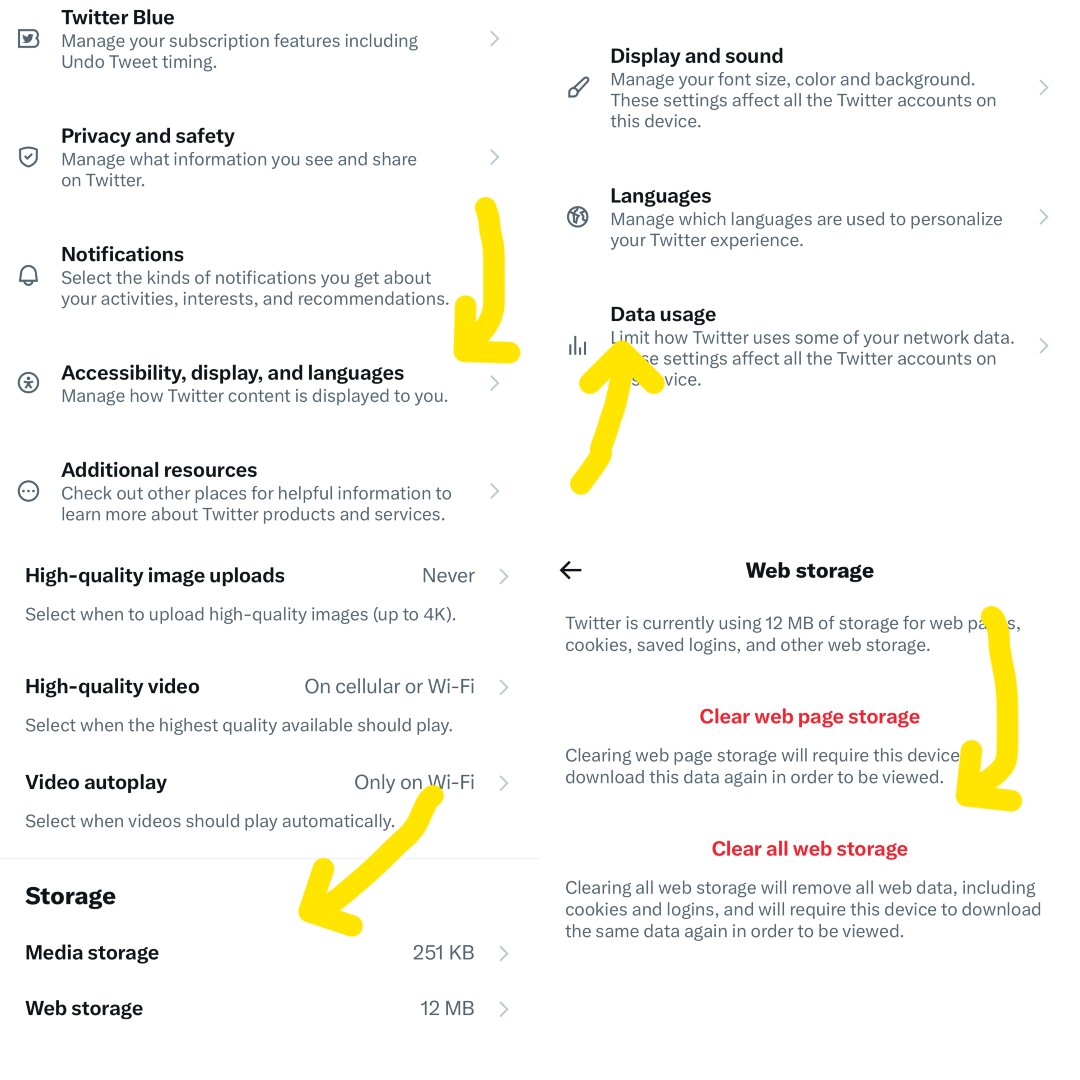
Clear TikTok Cache
- Open TikTok and tap on your profile in the lower right hand corner of the screen.
- Tap the hamburger menu in the upper right hand corner of the screen and tap ‘Settings and Privacy’.
- Scroll down to ‘Cache and Cellular Data’ and tap ‘Free Up Space’.
- Tap ‘Clear TikTok Cache’, then tap ‘Clear’ again.
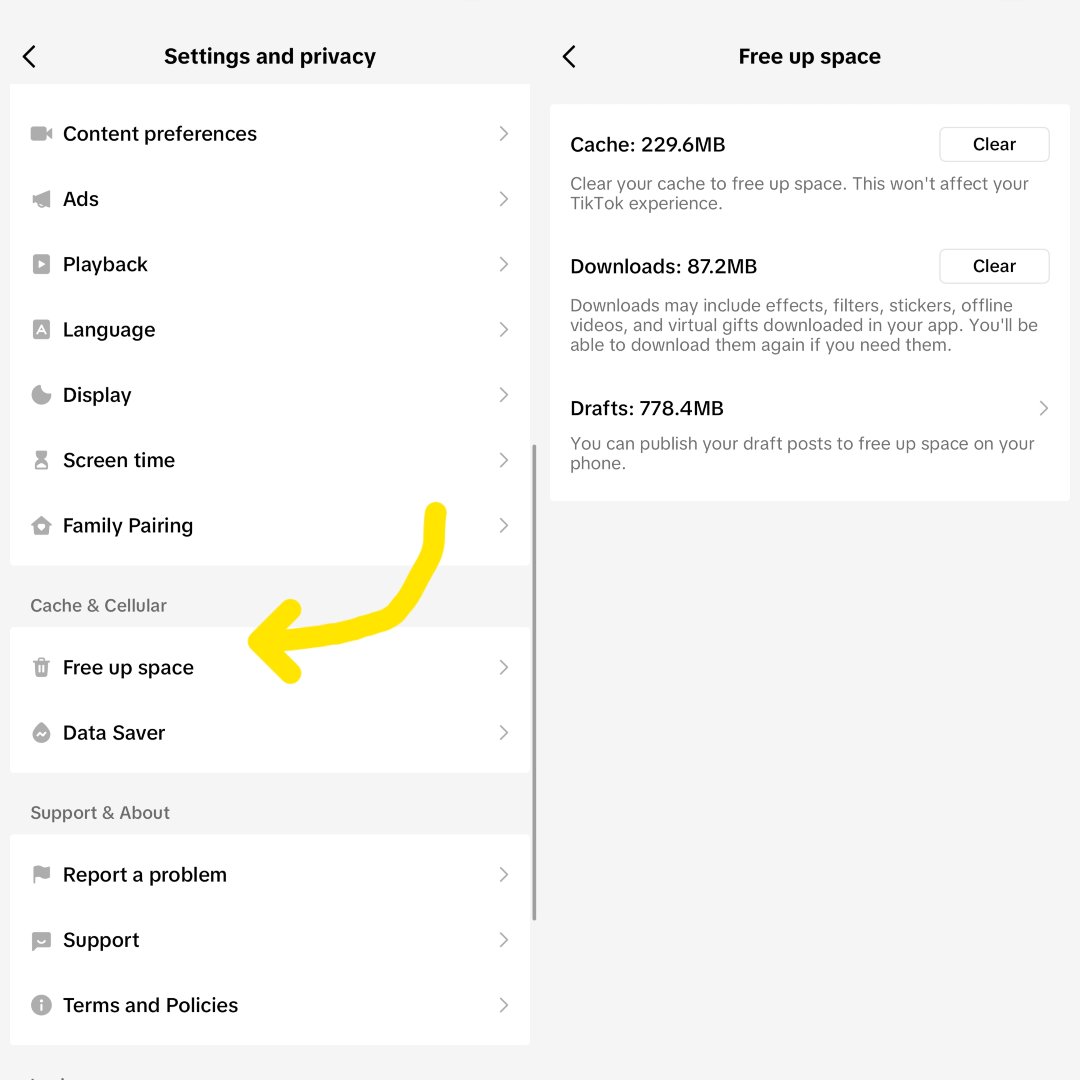
Clear Chrome Cache on iPhone
- Open the Chrome app on your iPhone.
- Tap on the three-dot menu at the bottom right corner of the screen.
- In the menu that appears, tap on ‘Clear Browsing Data’.
- Check ‘Browsing History’, ‘Cookies, Site Data’, and ‘Cached Images and Files’.
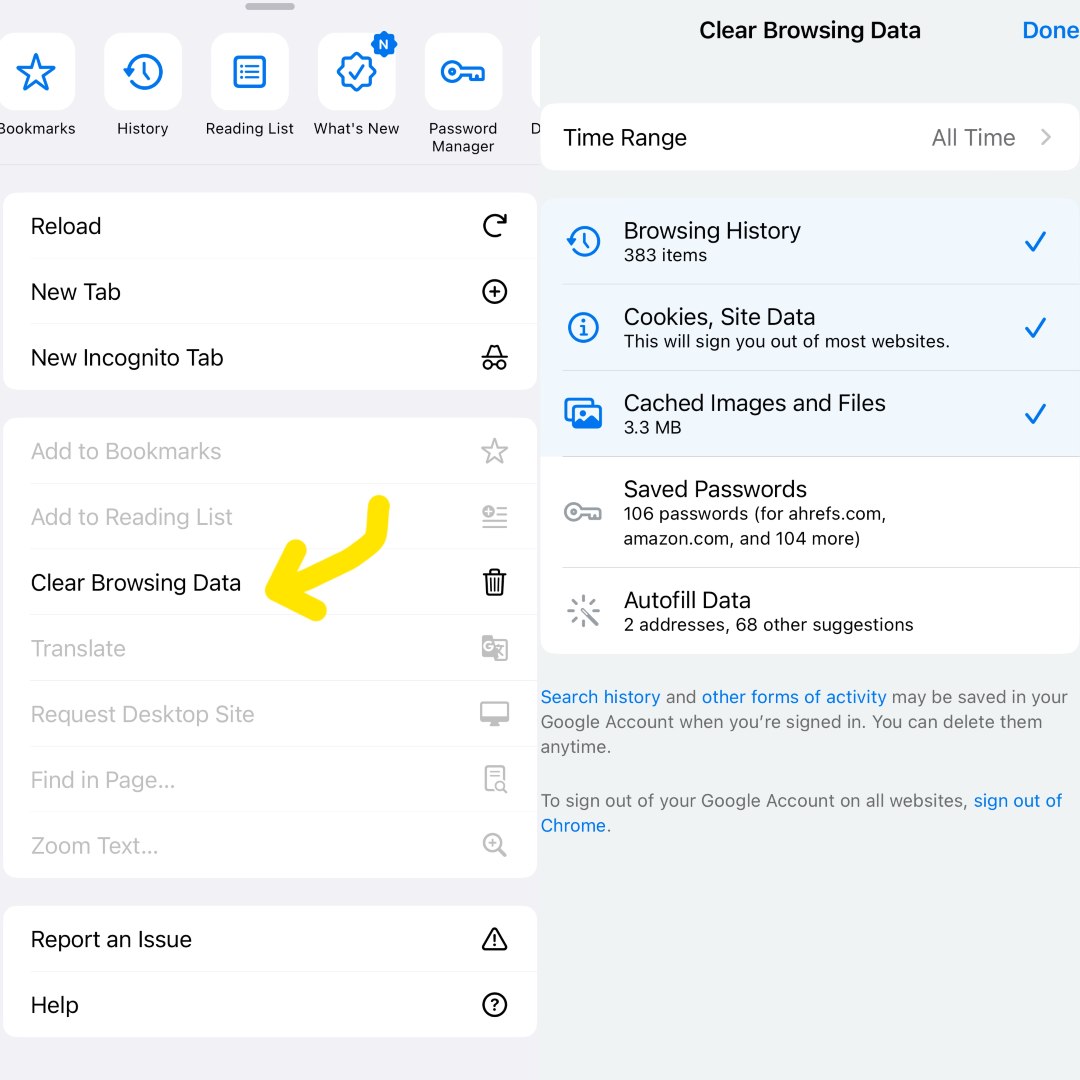
Clear Snapchat Cache
- Open Snapchat and tap on your account icon.
- Tap the settings gear in the upper right hand corner of the screen and scroll down to ‘Clear Data’.
- Look for ‘Clear Cache’ at the very bottom of the screen and tap on that.
Method 4: Use Offload Unused Apps Feature
The ‘Offload Unused Apps’ feature is an innovative way to manage your iPhone’s storage. It helps clear cached data and free up space by offloading apps you don’t frequently use. Here’s how you can utilize this feature effectively.
- Go to ‘Settings’ and tap ‘App Store.’
- Toggle on the ‘Offload Unused Apps’ option. This will remove lesser-used apps while keeping their data and documents, thereby freeing up storage.
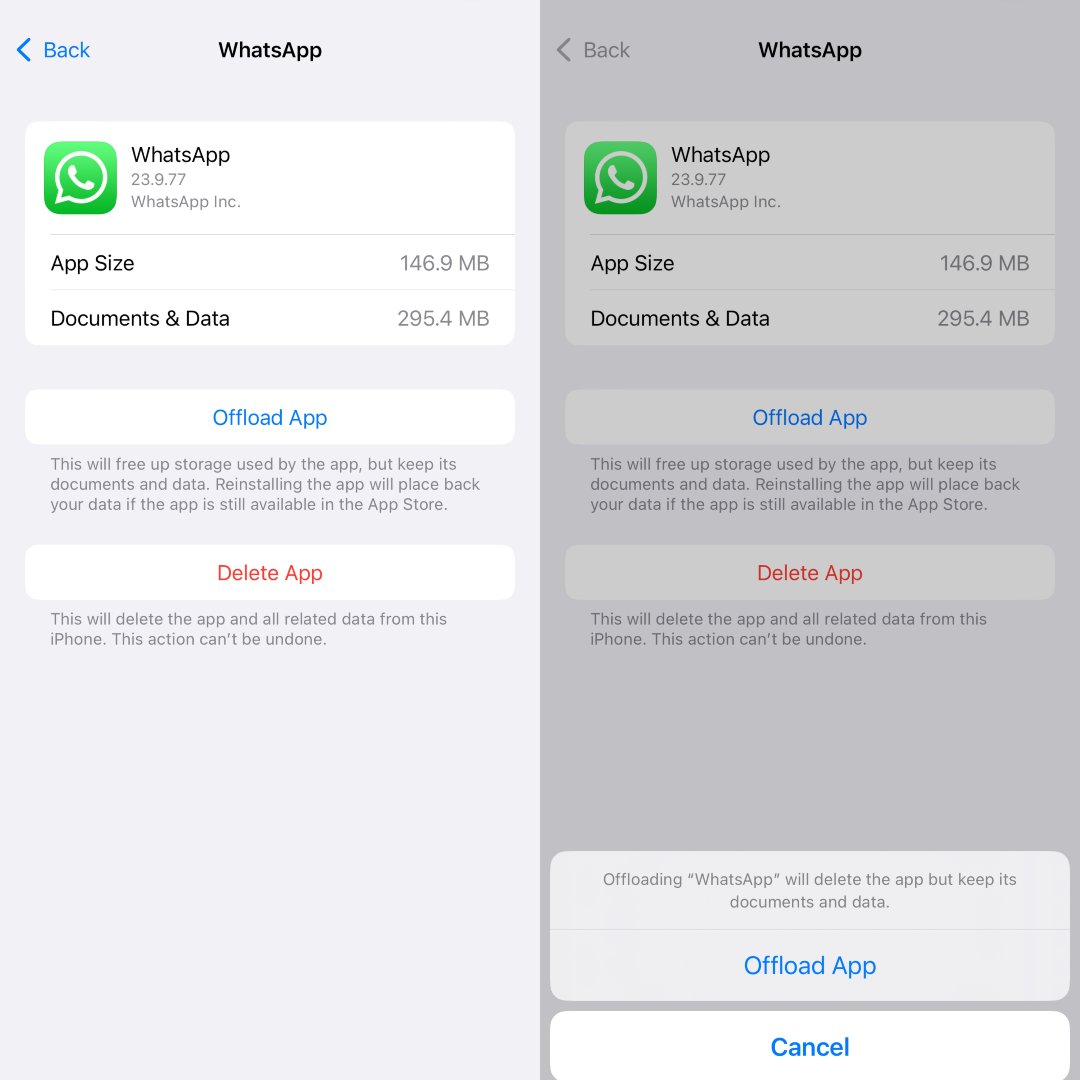
Method 5: Update to the Latest iOS
Keeping your iPhone updated with the latest iOS version is not just about accessing new features; it also includes performance optimizations. Regular updates often come with enhancements that can help manage your device’s cache better.
- Open ‘Settings’ and tap ‘General.’
- Tap ‘Software Update.’ If an update is available, tap ‘Download and Install.’
Remember, every new iOS update usually comes with several performance improvements and bug fixes that help your device run more smoothly.
Method 6: Use Third-Party Cache Cleaning Apps
There are several third-party apps available that can assist with cache clearing. These apps provide an easy and effective way to clean cache data from your iPhone. For instance, PhoneClean, CCleaner, and Tenorshare iCareFone are popular choices among users. Remember, when choosing a third-party app, always download from a trusted source like the App Store, and ensure that the app has positive reviews and ratings.
Method 7: Factory Reset Your iPhone
If you are experiencing significant performance issues, you may consider factory resetting your iPhone. This will not only clear your cache but will also remove all data and settings, giving your device a clean slate. Make sure to back up all important data before proceeding with this step:
- Go to ‘Settings’ and tap on ‘General.’
- Scroll down and tap ‘Reset.’
- Select ‘Erase All Content and Settings.’
- Enter your passcode, and confirm to reset your iPhone.
Method 8: Back up and Restore iPhone Using iCloud
Backing up and restoring your iPhone using iCloud is an effective way to clear the cache and address various system issues while preserving your important data. This method removes all temporary and cached data, resetting your device’s system to a cleaner state. Before you proceed, remember that this process will erase your current settings and data, so backing up completely is essential to prevent data loss. Here’s how to use iCloud to back up your iPhone and restore it, providing a fresh start for your device’s performance:
- Open ‘Settings’ and tap on your name at the top.
- Tap ‘iCloud’ then ‘iCloud Backup.’
- Select ‘Back Up Now’ and wait for the backup process to finish.
- Once backup is complete, go to ‘Settings’ > ‘General’ > ‘Reset.’
- Choose ‘Erase All Content and Settings.’
After the iPhone restarts, follow the setup guide and select ‘Restore from iCloud Backup’ when you reach the ‘Apps & Data’ screen.
Maintenance Tips to Keep Your iPhone Running Smoothly
Maintaining your iPhone’s performance requires more than occasional cache clearing. In this final section, we provide essential maintenance tips that go beyond cache management, ensuring your iPhone operates at its best.
- Regularly Update Your iPhone: Always ensure that your iPhone is running the latest version of iOS. Regular updates not only provide new features but also bug fixes and security updates for a better user experience. You can check for updates by going to ‘Settings’ > ‘General’ > ‘Software Update.’
- Clear Cache Regularly: As discussed, regular cache cleaning can keep your iPhone running smoothly and help free up storage. You can manually clear the cache from Safari and individual apps or use a trusted third-party apps.
- Offload Unused Apps: Unused apps not only take up storage space but also accumulate cache over time. Consider offloading these apps to keep your iPhone’s storage optimized. You can do this manually or enable automatic offloading in ‘Settings’ > ‘App Store’ > ‘Offload Unused Apps.’
- Manage Your Storage: Regularly review the storage space on your iPhone and remove unwanted files or apps. You can view your storage usage in ‘Settings’ > ‘General’ > ‘iPhone Storage.’
- Restart Your iPhone Regularly: A simple restart can sometimes solve minor issues and improve performance. It’s a good practice to restart your iPhone at least once a week.
- Keep Your iPhone Clean: Physical maintenance is also essential. Regularly clean your iPhone’s screen and back cover with a soft, slightly damp, lint-free cloth.
Remember, maintaining your iPhone not only enhances your user experience but also extends the life of your device.
Conclusion
Understanding and effectively managing the cache on your iPhone can significantly enhance its performance and longevity. While it might seem like a daunting task, with this guide, you can easily clear cache data on your device, boosting its speed, and freeing up storage space. Regular maintenance, including cache clearing, is key to a smooth user.
